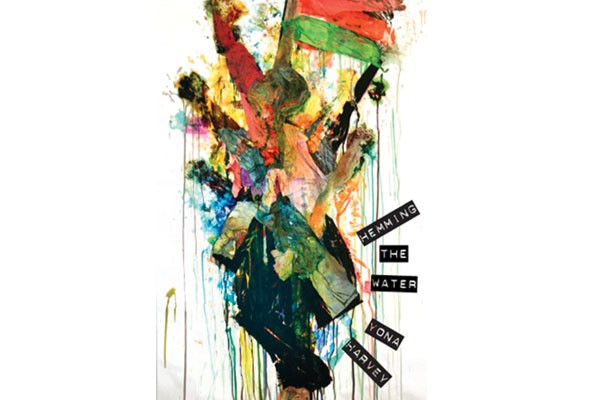A Singer sewing machine — some of us grew up with one. In Hemming the Water (Four Way Books), Yona Harvey' s breakout poetry collection, she stitches, darns and hems with language as fabric. Inspired by the great jazz musician Mary Lou Williams, Harvey sews (and sows) sound patterns that sing.
A professor at Carnegie Mellon, Harvey lives near East Liberty, where Williams grew up. Starting with the opening poem, "Sound — Part 1 (Girl with Red Scarf)," Harvey invokes Williams: "Sound was God, as she understood it, always poised to listen. What does a girl with a red scarf hear? Only she knows, approaching the world from the inside in."
The 72-page book is carefully structured: a concerto of water music in three movements, with Williams threaded throughout. The first section, "The Gate to the Water," reflects on Harvey' s chosen artistic mother as well as her real mother: "To describe my body walking I must go back / to my mother' s body walking with an aimless switch / in this moment of baptismal snow or abysmal flurry."
Colors vibrate in these poems: "Blessing Blue Crabs," "Rose Lassi," "Chatterblue," "Turquoise." The second section, "Swimming Lessons," concerns parenthood: A mother of two, Harvey voices anxieties about the world into which she brings children. This section ends with the book' s keystone poem, "Communion with Mary Lou Williams," an homage that includes a tour-de-force catalogue of naming: "Dear Daughter of the Elusive, Dear Black Coffee ... Dear Twelve Bars over Dishes Clanking ..."
The last section, "The Shape the Water Takes," encounters brutal reality, war and loss. Often creating a sense of mystery while evincing meticulous craft, some of Harvey' s poems can make you feel as if dropped without orientation into a place you don' t know. One striking poem, "Turquoise," is a counter-example, placing the reader in an easily legible domain.
Like Williams' music, these poems go where they go, modulating artfully, bristling with intelligence. Another famous Williams, the poet William Carlos, said that "a poem is a small (or large) machine made out of words." At her best — such as "Rose Lassi" — Harvey creates a feeling of something put together as well as the best machines that sew and sing, every word a necessary part of the whole humming beauty.


